Mostly Cloudy Exclusive: How HashiCorp intends to be the next big independent enterprise tech company
AN OVERNIGHT SUCCESS, SEVEN YEARS IN THE MAKING
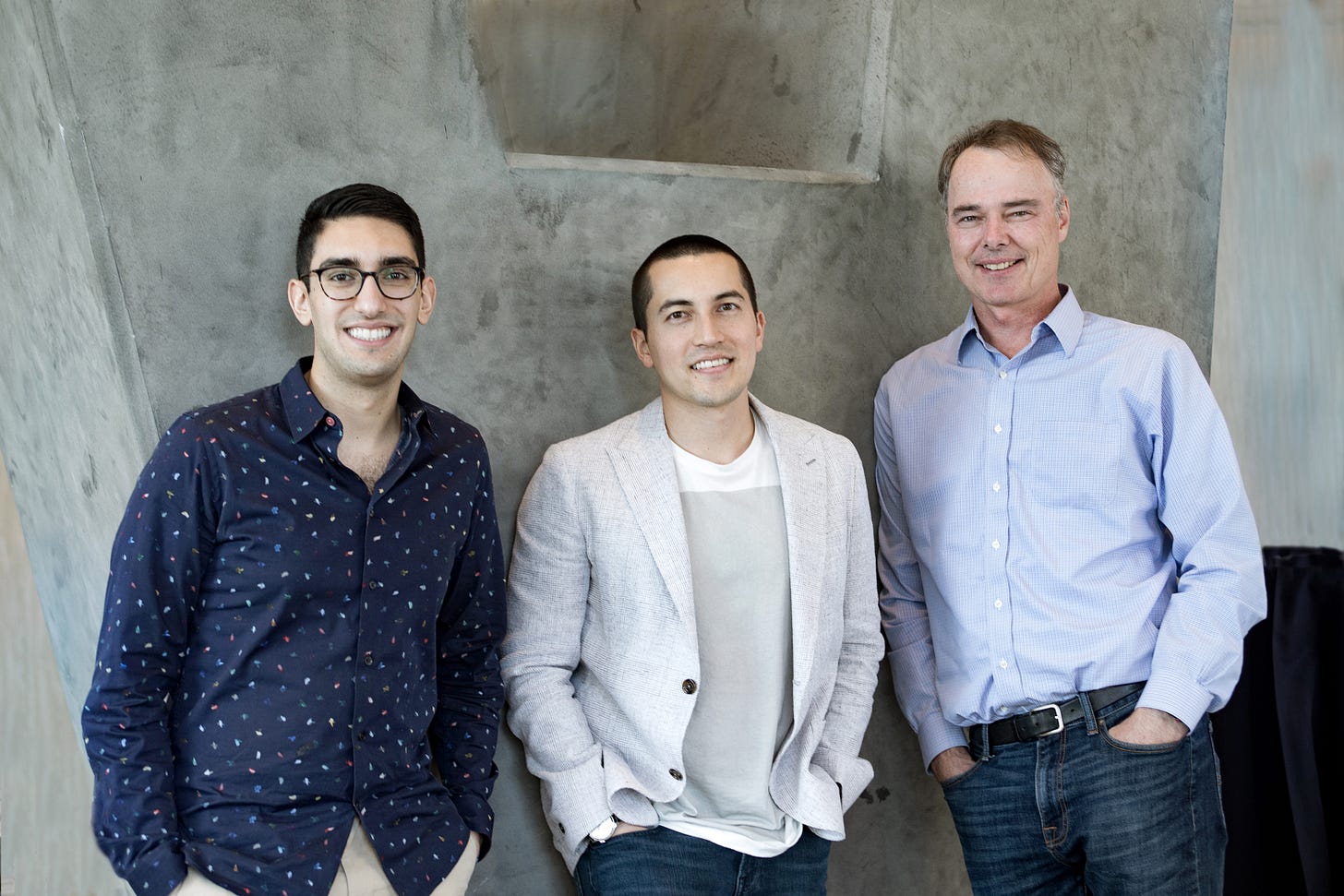
(L to R: Armon Dadgar, co-founder and CTO; Mitchell Hashimoto, co-founder and CTO, and Dave McJannet, CEO.)
Building a company is a very hard thing to do, by any measure. Building a successful enterprise tech company is several degrees harder.
But that’s exactly what former University of Washington classmates Armon Dadgar and Mitchell Hashimoto have done over the last seven years, turning strong opinions on how tech infrastructure should be built in the cloud era into one of the hottest companies on the enterprise tech market. HashiCorp, which hosted more than 1,500 people in downtown Seattle this week at its technical user conference, is valued at $1.9 billion after raising $100 million last year and has tripled the size of the company over the last couple of years in order to chase one of the biggest economic opportunities on the planet.
HashiCorp’s array of products — Terraform, Vault, Consul, and several others — help companies configure, deploy, and manage enterprise applications across their own servers and on public cloud providers. Right now, an enormous number of big companies are changing the way they consume technology by running more and more workloads on public cloud providers, and HashiCorp is well positioned to help those customers understand how to operate their businesses in this new world.
Sexy enterprise tech companies (honestly, this is a thing) have come and gone over the years, buoyed by promising technology but doomed by the harsh reality of selling that tech to skeptical end users. But VMware veteran Dave McJannet, brought on as HashiCorp CEO in 2016, has seen a tech transition or two, and has cautiously managed the company to the point where it has both a skyrocketing customer base and lots of money in the bank.
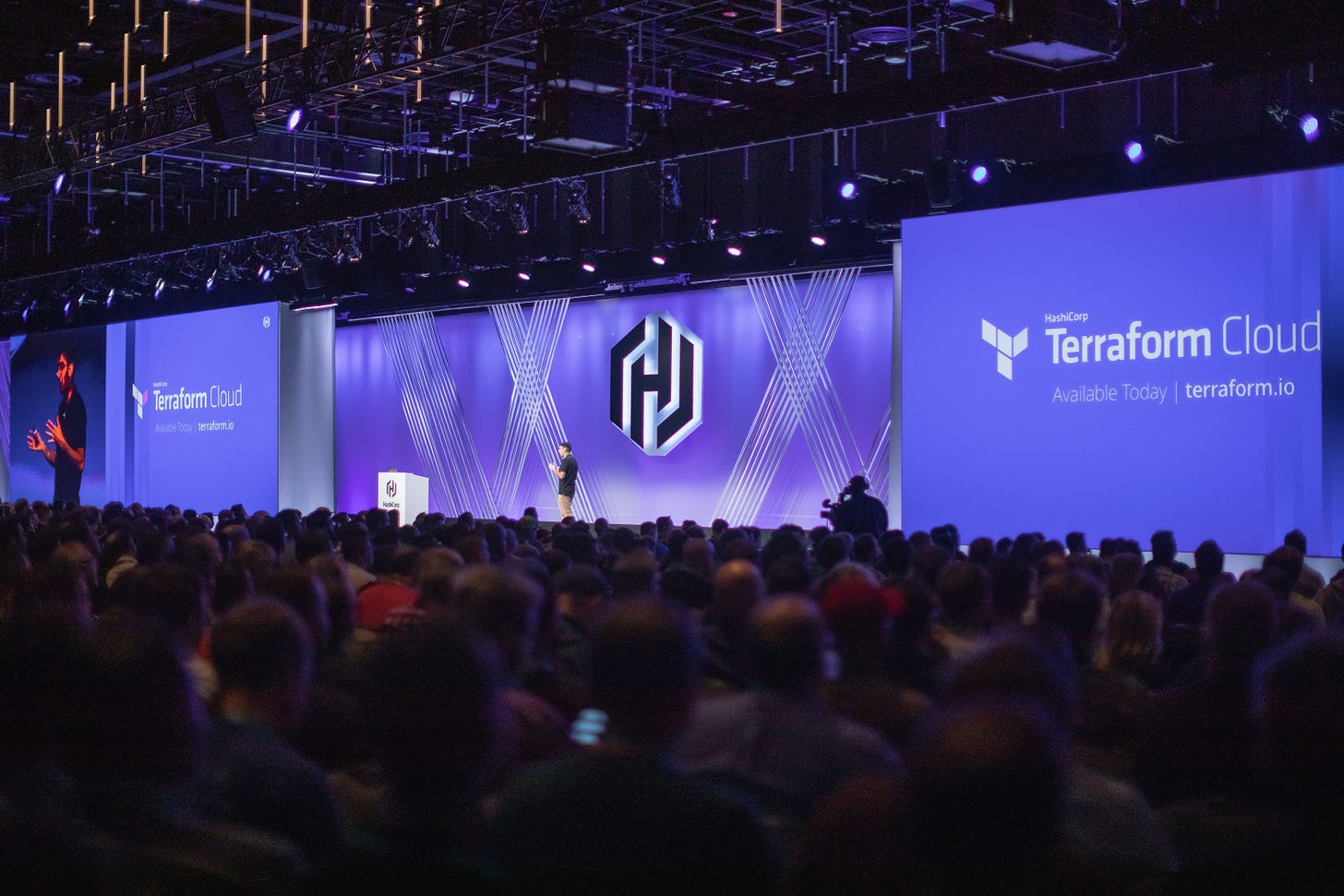
HashiConf in Seattle. (HashiCorp Photo)
HashiCorp has the potential to be a substantial independent force in enterprise tech for years to come. I spent an hour this week with Dadgar, Hashimoto, and McJannet discussing the state of HashiCorp and the cloud computing movement in general, and part of our conversation follows below: Once I get through it, the full transcript will be available to Mostly Cloudy subscribers.
(Disclosure: HashiCorp paid for my accommodations in Seattle this week. Mostly Cloudy’s travel budget is, um, rather small.)
Mostly Cloudy: So as I was preparing for the interview, I found the video of you guys talking about your origin story. I thought that was kind of interesting but it's sort of... it's real early. "Here's the idea and here’s how we came together.” Tell me a little bit more about the first two years of the company. You've come up with an idea, you've decided to work together, but now you have to actually build an organization around it. How did that start?
Mitchell: I feel like the first two years there was not a lot of organization building. I look back and it almost feels like we were so strong-minded and clear about what technology we wanted to build that almost, to a fault, to a stubborn, very stubborn point, we were like, heads down, building technology. Maybe the first two years we grew from us two to maybe 10 people, probably, and then it really started ticking up after that.
Armon: Yeah. We didn't hire anyone for the first year after that.
Mitchell: We didn't hire anyone for sure. And we told our investors that ... I think we felt it was really important, we wanted to build these technologies we viewed as foundational, And we thought it was important to be as early as possible and start showing this vision to get it going.
So if you look back in history, Nomad, Vault, Consul, Terraform, Packer, even, all came out sort of within a two-and-a-half year period of each other. All five projects, with less than ten people in the company. And then we had to scale from there.
There was a point at which you'd been working on some of these projects for a long time without necessarily a lot to show for it, right? How did that change, where you sort of realized, ‘oh, yeah, we've been making some amazing technology, but now we have to actually apply it and get money for it to satisfy our backers.’
Armon: So that's funny, because I think a lot of people look at HashiCorp like, all the products were an overnight success, and I think it felt like the exact opposite for all of us. We had conversations at times with the board where they're like, "Should you just kill that project?"
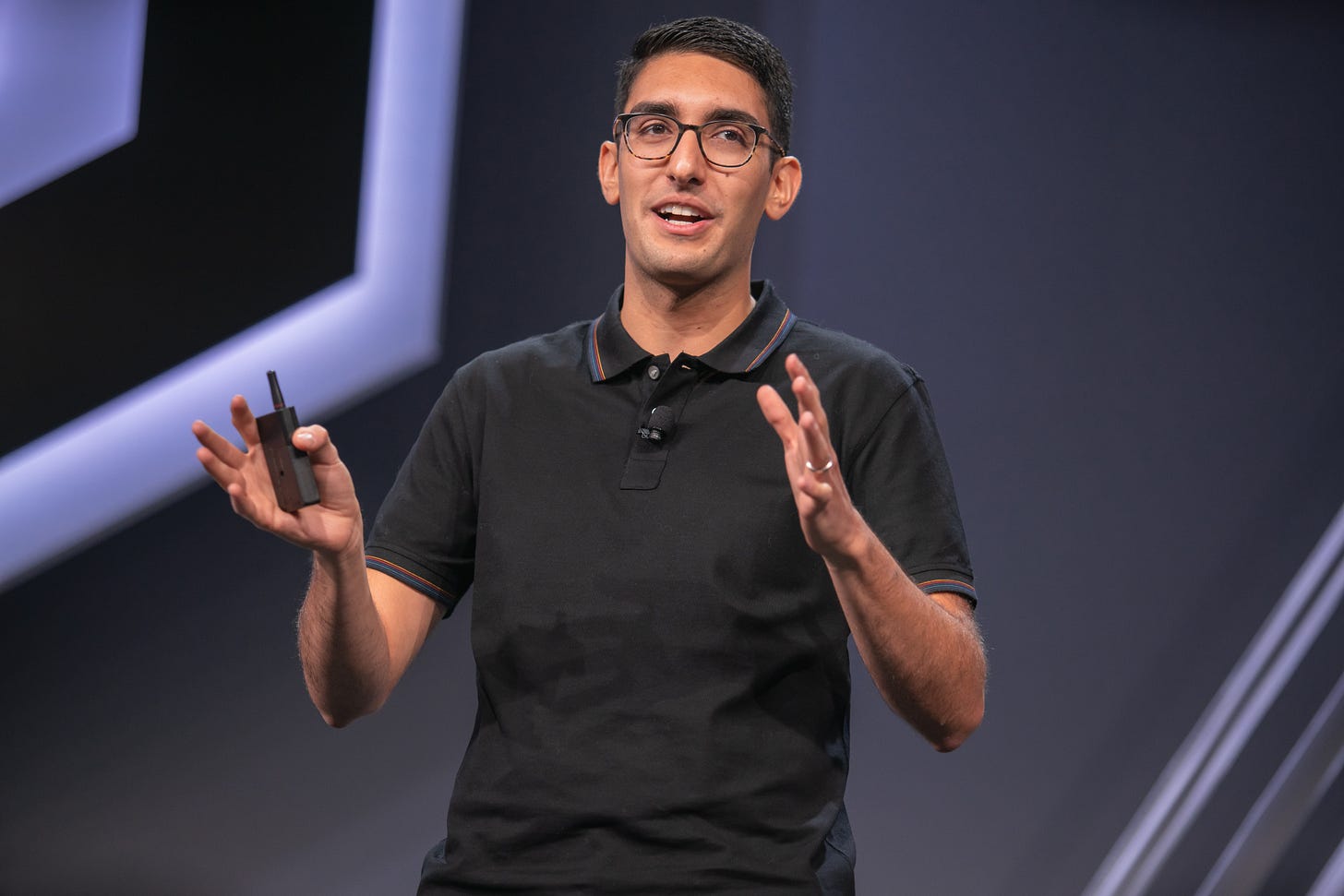
Armon Dadgar, HashiCorp co-founder and co-CTO (HashiCorp Photo)
And I think Terraform was probably like the longest burn. If you look at the download chart of (Terraform) for the first two years, it looks like a life support line, where it's just a flat line basically. And so it's funny, because I think there was a lot of conviction on our part that's like, "This is the right technology, and the right approach (to) doing it." But (there was) not a lot of data that sort of backed that at all.
So I think part of it was just sort of convincing the board that markets are early. You still have to educate people. There's sort of a necessary product maturity before they can kind of get to that point. And I think almost all of our products … until they really got to their dot three, dot four releases did it see significant uptake.
Did you find you had to make major changes to the products as you went out in search of that (uptake)? There's that thing where it's like, “I built a product, but nobody gets it.” And then there's,”I built a product, people get it, but they actually need this”. How did that play out?
Mitchell: We had both going on, for sure. The initial versions of Terraform were actually really bad. But the idea was solid in our opinion. But a lot of people also didn't understand the sort of “why?” behind it.
I'm of the opinion that things like that take time, and it's okay. And so now when we release something new, we get a lot of users right away. And it kind of freaks me out because I like the sort of slow burn; it gives you that time to mature.
What's nice is when people finally came to Terraform and Vault and so on, it feels like this amazing, stable, production-ready product. And it's been years. We've been working on it for years, so yeah.
Armon: I think the only one that wasn't like that was Vault.
Vault was the only one where you're like, "Will anyone even want this?" And you release it, and it's just straight up and to the right. It was just like, holy god.
Dave: If you look at the GitHub start history, that's what it looks like.
Why do you think that happened that way?
Armon: I think it was such this pent-up demand of like, no one had an answer for how to do secrets management for... not like a few years, but for like ever. Everyone knew the thing they were doing was wrong. No one was under an illusion. They're (not), like, putting passwords in plain text and checking into to GitHub was a good idea. No one thought it was a good idea. But there was no alternative.
So you mentioned, for the first couple of years, you didn't really hire anybody. And obviously that's changed. How many employees does this company have right now?
Armon: I think 620.
And how many did you have, call it two years ago?
Armon: 100, or a fifth.
Okay, that's a lot. How did you manage that? How did the company change? How did the company not change?
Dave: I think the market pulled us; this is the truth. The customer adoption it was so profound that it sort of pulled you into, "Okay, we're becoming great, adding big customers, we need to build our support organization and our customer success organization."
This how it actually happened, is once we realized that how the market might unfold, we sort of stepped back, and we actually hired leaders to the functions pretty early, seasoned folks to run success and marketing and that kind of stuff.
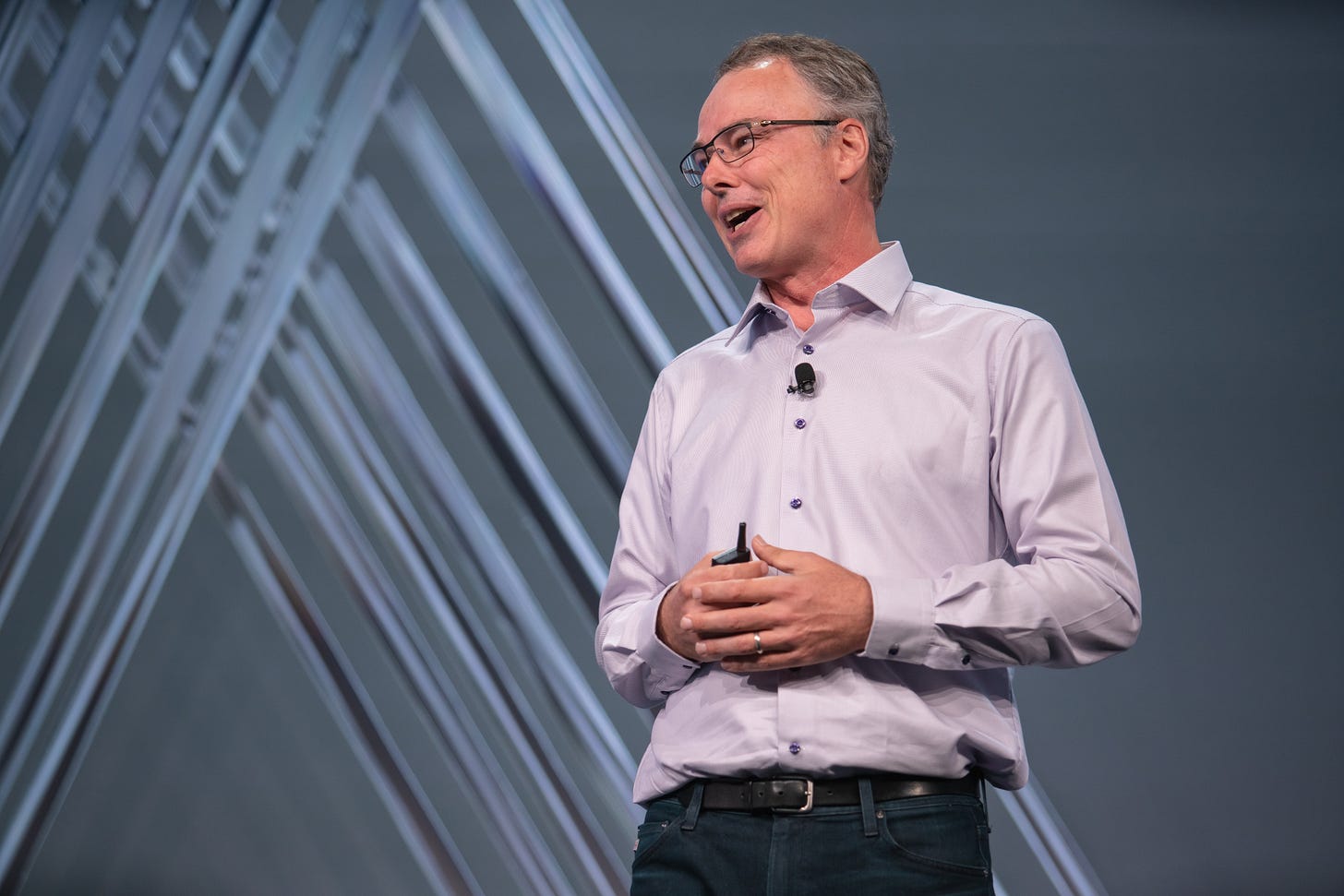
Dave McJannet, HashiCorp CEO (HashiCorp Photo)
They committed, and said, "You know what? This is going to be a big company, and we need to acknowledge the trust being placed upon us by our customers, and invest appropriately, if not ahead of that." And I think that growing that quick is not easy. (But) it's actually not that atypical either.
When companies like ours, in the B2B sense, that support customers and sell stuff as opposed to just having consumer stuff that takes off, that's just what they look like. They tend to double every year, and they double again, and they double again, because the market is pulling them and just to support the customer base you're bringing on (the people) you need to do that.
(To Dave) Was that basically your job?
Dave: Yeah.
The fabled “adult supervision?”
Dave: (Laughs) Hardly adult. Yeah, I joined in 2016, (the founders and I) had met maybe a year, a year and a half before that. And when I joined there were probably 35 people, probably?
Mitchell: A big part of it is Armon and I ... at a very quick stage (HashiCorp) was the largest company we had ever worked at. We sort of knew what our goals were, our ambitions were, but hiring someone like Dave and having him join … he knew what the next steps were. So he joined at forty (employees) and said, well if you want to be this enterprise company, this is the market (in which) you have an opportunity, and to seize it the next step is we have to hire these leaders.
if you were to graph out our headcount, there was a noticeable uptake once Dave joined, as we realized what it means to be an enterprise company.
Dave: We aspire to play this role for the biggest companies in the world, and you have to invest accordingly.
It’s just sort of a different gearing that happens, because this stuff is super serious to people's infrastructure. Giving them the tooling is one thing, but actually committing to making this successful over the long term, (that) is how you build massive franchises. Ultimately it's about trust and delivering on that over time, and that requires you to get bigger to support it.
Mitchell: The cultural aspect is obviously very challenging as you grow very fast. We do an all-company, all-hands, every year internal-conference type of thing. And one thing I said three years in a row, is that when we were 100 people, and when we were 300 people, we're 600 people; everyone in the room at any given moment is an early employee for the next doubling of the company.
So you joined at 500 (employees) and you look at the people that were employed at less than 100 and you're like, "Wow, they were early." When we're (at) 3,000 they're going to look at you be like, "Wow, you were early." If you were employed less than 10,000 at Microsoft, you were really early.
And so I like to remind people that as much as we have influence, we can't tell the company what the culture is going to be, it's going to be organically what happens. And so it's up to everybody who's early, which happens to be everybody at all times, to choose what's that going to be. If you think our culture is great, you've got to keep it. It's up to you to keep it going.
You're going to keep the “Day One” thing going for as long as you can?
Mitchell: Yeah. And I think that’s super important.
If you look at iPhones versus Androids or any other phones, they all have Bluetooth, they all have WiFi, they all have OLED screens. They're all … the technical bits that are connected are the same, and yet they feel very different. And I think that (enterprise) technology is the same way. It's like you can make it work by just gluing things together, but I think our community tends to like our tools because they feel different.
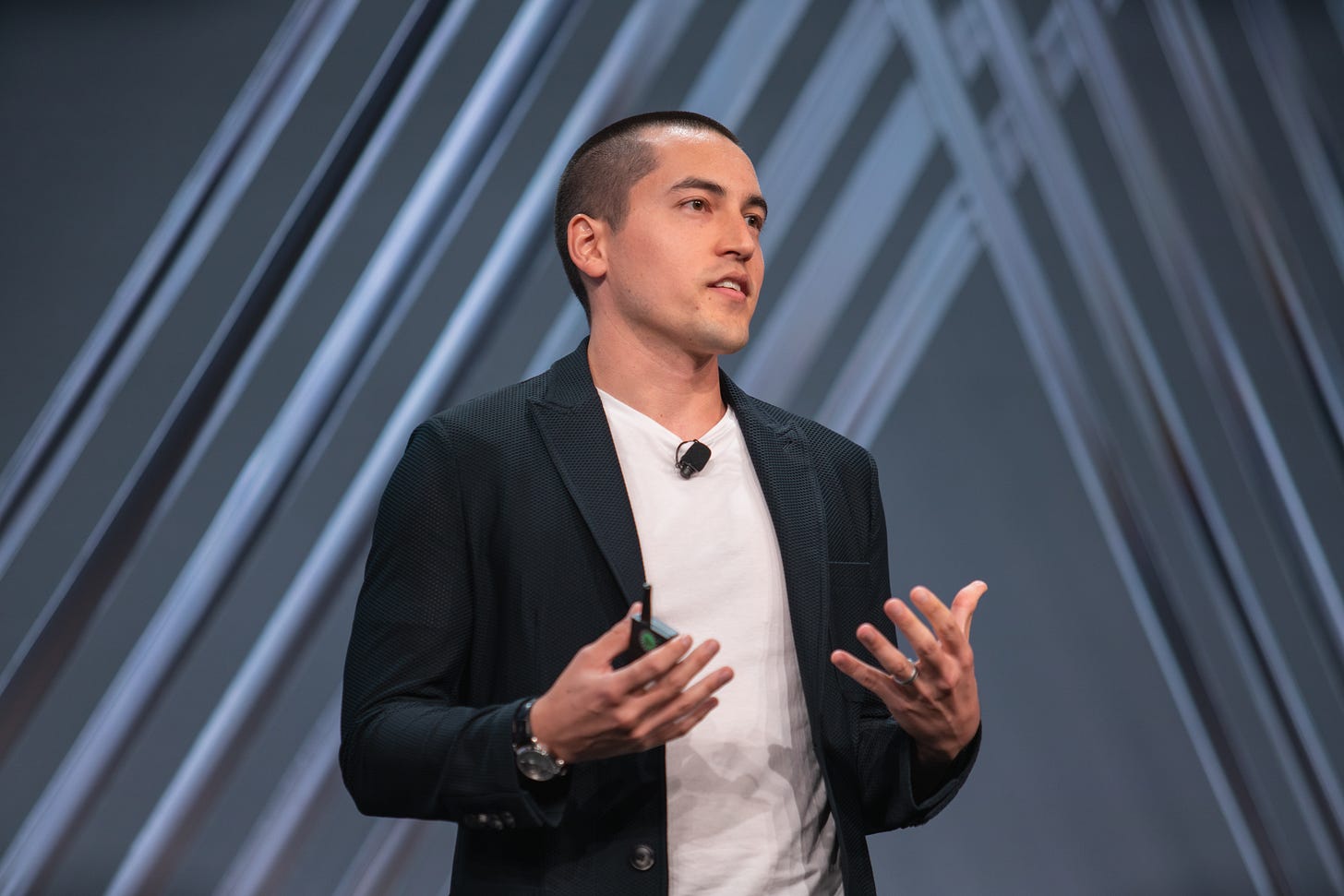
Mitchell Hashimoto, co-founder and co-CTO, HashiCorp. (HashiCorp Photo)
I'm interested in being the iPhone of infrastructure and not the Android of infrastructure, right?
You can't help but notice that the four major sponsors of this event were AWS, Microsoft, Google, and VMware. What is your relationship with the big providers like?
Dave: Well I think the ultimate scenario is we won partner of the year from Google and from Azure this year, and Amazon doesn't have a partner of the year, so I think that we likely would have fared well there too.
Mitchell: I think it's such a uniquely symbiotic relationship, in the sense that clouds are very interested in having more people adopt their platforms. We're completely unbiased as to which platform you end up (on) and our tools, in a lot of ways, make it easier for people to adopt cloud that aren't equipped to do it. These companies that are heading there and don't know how to do security and things like that.
If a company is like, “well, how do I do security in the cloud,” if they're going AWS I'm sure AWS would like to just tell them. They have the AWS way to do it, but those that customers are smart also to understand that bias, and be like, "How do I talk to someone who won't tell me I should use Amazon, or Google, or Azure, or something, and will just think strategically about what's the best way for this company to succeed in a cloudy world?"
I think we're really the only vendor that's independent that has that sort of viewpoint. That's sort of big enough and, even if you look at companies like Red Hat, they're now attached to IBM, which has their own biases — whether real or imagined — but they're there. We don't.
I think that the clouds recognize that, the customers recognize that, so we're in a great position to partner in every way.
Dave: I also think like from (the cloud provider’s) perspective, ultimately they sell compute. And that's what they trying to do, and they're trying to get companies to build new applications using their native platform services that mean they're going to run there. And we reduced the friction for that.
But they (cloud providers) increasingly sell higher margin services that do sort of butt up against some of the things that you're doing.
Dave: They do-
And they'd like to sell more of those.
Dave: But we don't have any platform services in out portfolio. All we're doing is providing a way to provision infrastructure.
Mitchell: I think that's a really important detail because there's a lot of companies that are multicloud, or cloud management, or some category like that, but what they do is abstract clouds. They try to make it so that the cloud's invisible and we just get you to the cloud. I think that aligns well with the theoretical wishes of the customer, but it doesn't align well with the cloud provider.
They're trying to specialize. They don't want to be commodities. They're trying to sell these high-margin high-value services.
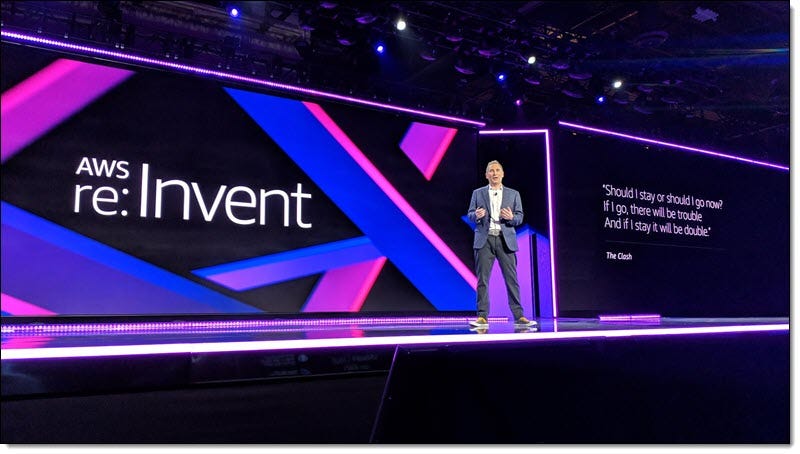
Andy Jassy, AWS CEO, speaks at re:Invent 2018 (AWS Photo)
In our case we abstract the workflow and not the technology. And so if you want to use Amazon Aurora, or Google Spanner, you make that choice and we enable that.
Dave: And the app could never move.
Mitchell: Yeah.
Dave: Once an app is built to run on Amazon and it's done here in Terraform, Terraform exposes that this is a configuration for the Aurora service, that app cannot run anywhere else, which is what the cloud providers want.
There was this category of cloud management platform years ago, and they tried to create this lowest-common denominator of services so theoretically you could move things around. And in practice, A, data has gravity so apps don't (want) to move anyway, and B, the cloud provider is not particularly interested in that model.
Versus for us we go, "No, we just provide a consistent provisioning mechanism, every time you were releasing your service on Amazon, the Terraform provider for Amazon is updated.” And it's sort of this perfectly symbiotic relationship, where we're just helping reduce the friction for people to adopt.
Which is why the cloud providers actually support it. And you saw that (Tuesday) too with the Azure announcement, which is just more indicative of, hey, we do lots with the cloud providers.
We run quarterly business reviews with them because we're doing so much together on the product side. We're doing massive field (sales), we go to markets together.
So the company has raised, I think $174 million in funding. You're starting to get into category where a large exit or an IPO is the next logical step.
There's lots of other enterprise tech companies that have reached this height without necessarily finding a clear path forward. What's your plan? How are you thinking about that large strategic question about where this company goes next?
Dave: I think what's clear to us that the market category we're playing are extraordinarily large, and our customers want us to play this enabling role for them. And I think-
Mitchell:
And the market sort of needs it.
Dave:
And the market needs it. The market needs someone to play this role.
Its almost analogous to when the market needed (virtual machines and VMware) more to help with the last transition, and you're solving a huge problem for people by enabling this common model for infrastructure. And so our path just could be a big strong independent company.
I mean, if you can't build a massive company in this market then I don't know when you can. And so that's the path we're on, that's what our customers want.
These are big companies making big strategic commitments in a space that really matters to them. In fact even our fund raising is reflective of that, we don't control what people value us at. We just build our company-
Well, come on.
Dave: You do and you don't, really. We build the company and then the investment community says, "This is what I think it's worth." And we go, "Okay, that is what it is." We could say, "No it's not worth that." But ultimately we're not in that business, we're in the business of building the company. And revenues justify what people are willing to pay for it. So I think we entered our fund raising in that way.
We raised $100 million around last year, and the primary driver of that was to demonstrate to our customers that we are funded to be a big strong independent partner. That was the only reason. And I think that's indicative of how we think about it.
